Four Essential Steps for a Healthy, Happy Pup
If you have a puppy, congratulations! Now's the time to give a little thought to what you're actually going to do to get things right with your pup. And it’s wise to think twice about your approach – because, as they say, an ounce of prevention is worth a pound of cure. Meaning of course you can undo “mistakes” that you make over the course of your dog’s life, but why not just try to avoid those mistakes in the first place, if you can at all help it? This article is going to show you exactly how to ensure you get off on the right foot with training (and building your relationship with) your new puppy.
Usually I don’t use the “M” word (mistake). That’s because I want you to stay relaxed about what you do with your dog, and if you’re really tense and worried about doing the wrong thing then your odds of actually doing things “less right” go up quite a bit. Puppies are so impressionable, malleable, that a little can go a long way. A little in either direction. So the focus of this article is going to be showing you how to structure your life with your pup so the little that you do has the most beneficial effect.
A little versus a lot
Now why “a little”? You have this new pup, and don’t you want to try to teach this puppy everything there is to learn about being a dog in a human world? While they’re still young?
That’s certainly the temptation. Especially because of the proliferation of puppy classes (for obedience training) and puppy playgroups (for socialization) – you start to get the feeling that if you’re not scheduled out for activities with your puppy every night of the week, then you’re doing something wrong. But I have to tell you that those kinds of activities can often do more harm than good, overwhelming your puppy’s developing emotions and nervous system.
Instead, you are going to be much better served by being relaxed and measured in how you structure your puppy’s life. Before you start thinking about things like obedience training, or worrying because your dog pulls on their leash, there’s a bigger picture that you need to consider.
The Most Important Things to Remember When You’re Raising a Puppy
I’m going to sum it up for you here, in a few important principles. If you can remember these principles, then they will help you decide to what degree anything has a place in your young pup’s life. I’m going to give you the principles at once, and then describe each of them individually.
- Your main goal is to teach your pup what to do with their energy. To give their energy an acceptable outlet.
- Your next goal is to help your pup relax. To learn the value of downtime and deep, physical repose.
- Finally, you want to limit the amount of stress that your puppy experiences (and resolve it when it occurs).
- Oh, one last thing – have fun.
If you keep these principles in mind as you choose what to do and what not to do with your pup, you will most definitely make more “right” decisions. So let’s talk about what they mean in a little more detail.
#1 - Teach Your Pup What To Do With All That Energy
Your pup is probably has a never-ending wellspring of enthusiasm for life, as they explore the sights/smells/tastes of the world around them. Remember that the best way to exhaust your puppy is to address their need for emotional exercise. It’s more important than physical exercise. The way that you give your dog emotional exercise is to give them a direction for all that energy that will satisfy them on the deepest of levels.
At the same time, you’ll also be teaching your pup the most important lesson you can teach:
Interacting with YOU is the best way to release energy and stress.
The best way for you to do that is to tap into your pup’s prey drive – and you can do that using food and their desire to bite and chew. By practicing the following exercises with your pup, you’re creating a solid foundation for your emotional connection. This foundation will help you communicate as your pup grows and experiences the intensity of life in a human world.
Here’s the list. The notes are important things to consider when doing these things with a puppy – but make sure you follow the links back to the instructions for doing each of these exercises. Even if you’re pretty sure you know what I’m talking about, it’s important to refresh your memory for exactly how these activities should be done.
I also have very detailed video instruction on how to connect with your dog and direct the flow of their emotional energy on my instructional DVD set (which covers strengthening the bond between you and your dog and using that connection for rock-solid obedience) . And there’s video combined with even more written instruction in my pay-what-you-want online course How to Speak So Your Dog Will Listen (on DailyOM.com).
- Push with your dog. Especially with a young puppy, the pushing technique echoes the exact dynamic that your puppy went through when struggling with littermates for a taste of mama’s milk. So it allows you to maintain a similar kind of bond with your pup that they had with mama not-so-long-ago. With the youngest of pups, you should focus on just providing a little bit of resistance as you feed by hand. As a pup gets older, you’ll get more enthusiasm for the push, and you can turn your rounds of pushing into a larger game of push-me-chase-me around the back yard.
- Play Tug-of-War. Just be gentle on those little developing teeth. Keep the intensity of the game on the lighter side of things. Playing tug with acceptable tug-toys is a great way to redirect a puppy who has a tendency to bite/mouth other less desirable things.
- Use a long leash and then FORGET about the leash. The leash is just there as a safety - to gather up your young dog if they decide to head for the hills. Don't worry about leash manners - instead, focus on the relationship that's developing between you and your dog as you direct the flow of emotional energy.
- With both #1 and #2 (and in general), encourage your pup to chase you, whether it’s chasing you around the backyard for a game of push or tug, or following you for a few steps before you give a tasty treat.
- Also - speaking of biting…give your dog acceptable things to chew on during down-time around the house. Real raw bones are great, and you can also check with your vet for their recommendations for age-appropriate chews.
- Play Hide-and-Seek. This game reinforces your dog’s attraction to you, and is also a lot of fun to do with a partner. If you must, you can also play this game indoors, but keep your enthusiasm down when your dog finds you. In an indoor environment, a low “good doggie” combined with a treat is reward enough.
What about puppy playdates?
Getting your pup together for playdates with your other friends’ dogs/pups can definitely be fun and amusing. And, as long as the play goes well, your pup will be getting a decent emotional workout. So what does “goes well” mean?
Generally, play “going well” means that you see lots of flips in polarity between the dogs playing. The dogs will take turns being the chaser and the chasee, or the one on top and the one on the bottom. The flips in polarity represent a healthy flow of emotion between the two dogs, and it’s their way of keeping things from becoming too stressful at any given moment.
However, at certain points you might sense that the intensity is starting to escalate. This heightened emotional state might be something that you simply sense on a gut level, or you might actually witness it with nipping, increased growling, or signs of physical tension in one (or more) of the dogs. At this point (or before, if you can be pre-emptive about it) it’s a good idea to separate the dogs and give them some down-time. You might also do some pushing, or play some tug with your pup as a way to help release the built-up stress from the doggie playtime.
Ultimately, your pushing/tug routine will be able to satisfy much more emotional energy than interacting with another dog will be able to do. Playing with other dogs is a good way for your pup to experience the flow of more and more emotional energy – but your job is to be the one who gives that mobilized energy a healthy, satisfying place to go. And that’s through pushing/tug/etc. with you.
It’s best to limit your puppy’s playtime to one or two other dogs. Any more than that can easily become too stressful for a young pup. And as you might recall from above, principle #3 is to limit the stress your pup experiences. We’ll be discussing that further on down the page.
#2 - Help Your Pup Relax
While your first job is to give your pup’s emotional energy some direction, your next goal is to ensure that your pup has plenty of down-time. Between the up-time and the down-time you are actually giving shape to your dog’s emotional life, crafting the “big arc” of their behavior. As your dog gets older, you’ll be focusing on more and more subtleties of behavior (like sit/down/stay/make breakfast/etc.). For now, however, you are simply trying to paint with broad strokes, giving your dog a sense of when to get their energy out, and when to simply chill and stay relaxed.
Probably the best thing for you to do in this regard is to structure their time so that all (or almost all) activity/play/training happens outdoors. Conversely, the indoor environment is where your dog gets to chill out, sleep, and chew on bones. Here is an article that details the relationship between indoor and outdoor activities in great detail.
Your pup’s human interactions indoors, if they occur at all, should be focused around relaxing massage. Pay attention to the quality of your touch and the response that it elicits from your pup. Your goal is to soften your pup’s muscles, and to lull your pup into a state of blissful relaxation.
Time in the Crate
Crate Training is a great way to housetrain a new pup and structure their indoor time. The crate not only gives your dog a safe space indoors to be away from the intensity of all the human hustle and bustle, but it also is a reminder for you to give your dog that peace and quiet. Here is a link to an article that I wrote on how to crate train your dog.
Ultimately you can incorporate the crate into some of your obedience work as well. For instance, you can use it as a “safe space” for your dog to go when guests arrive. Or once your dog has a rock-solid down/stay, you can start practicing that in the crate. For now, however, while your dog is maturing, simply view the crate as a way to help keep your puppy out of harm’s way, or stressful situations.
#3 - Limit the Amount of Stress In Your Puppy’s Life and Resolve It When It Occurs
As I’ve alluded to in the previous two sections, one of the most important ways for you to help your puppy is to pay attention to how their experiences in the world make them feel. Get to know the signs of stress in your new dog – physical tension, growling or barking of any intensity, going berserk with energy (like racing around a room), suddenly getting submissive, fixation on a particular behavior or object. When you see those signs in your dog, it should be an indication to you that you’ve already exposed your puppy to more than they could handle. Make a mental note not to let it get to that point next time.
Prevent Stress
The best way to prevent stress in your pup is to focus on the simple structure that I’ve outlined in this article. Instead of taking your pup down a busy city street, head out for a walk in the park, or the woods. Instead of going to the dog park, arrange a play date with one other dog – and be on the lookout for the signs that the dogs need some downtime. Instead of overwhelming your pup with interaction (as tempting as that might be – since they are so gosh darn cute!), give your pup plenty of time to chill out and relax without any demands placed upon them.
First evaluate the level of emotional intensity in the plans that you make – keeping in mind that almost anything indoors that a human would consider to be “exciting” is going to be really intense for a puppy. Then ask yourself whether that level of intensity is likely to produce stress for your puppy, and if the answer is “yes” – consider your alternatives. A different activity. Or simply leaving your pup home alone in the crate to relax (perhaps with a good chew toy) while you head out for some shopping downtown.
Resolve It
If you’re going to face a situation where stress is unavoidable (like when a bunch of guests arrive at your house), then your best option is to work with the energy and resolve the stress for your pup. There are two ways to handle the stress, and they work hand-in-hand.
- Manage it. Find ways to make an unavoidably stressful situation less stressful. For instance, if you’re expecting houseguests, it can be much easier for your puppy to handle the situation if you meet them outside, or even take a walk around the block together.
- Resolve it. All that energy that your pup is experiencing has to go somewhere. If you can give that energy direction (remember when we talked about that?) then you can help your puppy stay in the emotional flow – instead of experiencing stress. Or you can help them release any stress that’s stored up within them. In those moments, you can use the technique of rechanneling (or redirection) as a way to help your dog through high-energy stressful times. This is another technique that I demonstrate in video – both in my DVD set and my online course.
In addition, you can be reassured that the cycles of pushing/tug and relaxation that you provide for your pup will help neutralize the effects of stressful times.
#4 - Have Fun with Your Pup!
Having fun is mostly about your mindset while you help guide your new puppy through these first months of life and development. Your role with your pup should be one of “guardian” or “caretaker”, and you should be focused on how you are ushering this new little being into a completely unfamiliar world. Can you protect them from harm? Can you protect them from their own lack of knowledge about “right” and “wrong”? Can you foster an environment for your puppy that helps them grow into the dog you hope they’ll become?
What I mean is that if you find yourself thinking about what you want to GET from your puppy (obedience, unconditional love, amusement, etc.) you’re essentially setting yourself up for unhappiness and internal conflict each time your puppy is disobedient, seemingly not loving, does something that doesn’t amuse you, etc. And that emotional state within YOU becomes an obstacle to responding correctly and making the right choices with your puppy.
The more that you focus on what you can GIVE to your puppy - an outlet for their energy, peace and quiet, a safe environment – then the more you will be able to appreciate the experience in all its glory. You’ll laugh when your puppy is ridiculous. You’ll be able to stay nonreactive if your puppy does something “wrong” – and redirect them into doing something right instead. You’ll feel a completely new connection to the world around you as you experience it through your puppy’s eyes.
How Do You Know When Your Puppy Is Ready for the Next Step?
Whoa there, slow down! How about just enjoying your dog’s puppyhood? OK, ok, if you really must know…
There are essentially two ways to tell if your puppy is ready for more intermediate or advanced training. The first is a rule of thumb about how dogs age, which essentially goes like this:
- Focus on play-like interactions and the “big picture” structure almost exclusively for the first 6 months of your pup’s life. Err on the side of managing stress (instead of bringing your dog into stressful situations)
- Around 6 months you can start spending more energy on things like sit/down/stay/heel. Start experimenting more with redirecting your dog’s energy. See how your dog responds when you bring them into situations that you know will be more energized. Gradually increase the scope of what you’re doing.
- Around 1 year of age, expect your dog to go through an adolescence where you have to take a few steps back. Embrace it, and take a few steps back.
- From 1-2 years of age slowly build back to where you were before, and then keep on going.
- [here's a gentle reminder of all of the steps necessary in truly developing a rock-solid recall with your pup - in other words, how to get your dog to come when called no matter what.]
The second way to approach it is to simply take it slow and focus your attention on getting a feel for your dog. Then progress at whatever pace feels natural. You know you’re doing too much if your dog seems stressed, or if they “fail” at the exercises repeatedly. Take things back a few notches if that happens.
You also know that as your dog matures emotionally, they may “unlearn” things that they already knew. Adjust accordingly.
Over time, add new techniques/challenges. For instance, you might start integrating heeling work once you have a good, consistent push from your pup. Then you can change things up between pushing/heeling/tug – integrating them all into one big game that you play. Or you can integrate “box-work” – playing with your dog’s waiting response and getting a taste of sit/down/stay – and then flowing right back into your tug and pushing.
The point in this second approach is that once you know your dog well, and once you’ve accepted that progress occurs at its own natural pace, then you can simply experiment to keep things fun, interesting, and challenging for both you and your dog. Your experimenting will of course be tempered by your sensitivity to your dog’s emotional state. Paying attention to your pup’s emotional state (and your own internal compass) will be a great guide for you as you move forward with your developing puppy.
You are not alone
I just want to remind you that if you ever have questions, I am happy to help you with a coaching session for you and your pup. Sometimes all you need is some external feedback from an expert to point you in the right direction. I can also help you determine whether or not you need to adjust your pace, or with customizing any of the Natural Dog Training exercises to your particular situation.
In terms of other ways to connect, there are also lots of great discussions going on amongst many of the people using Natural Dog Training techniques on the forum here at Naturaldogblog.com. (you can even discuss this article!)
I hope that this article on how to raise a puppy using Natural Dog Training has been helpful for you. Here’s to your success and happiness, and congratulations on the new addition to your family! Please keep me posted on how the Perfect Puppy Plan works for you!


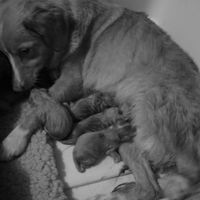
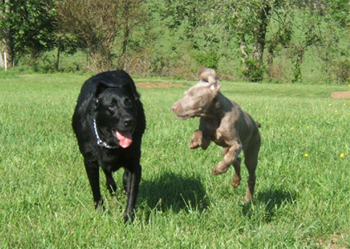
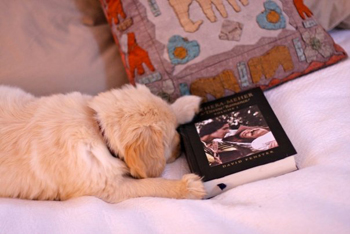

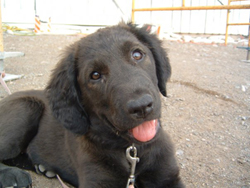
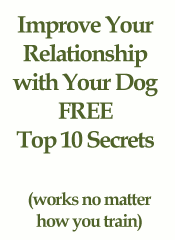
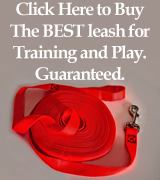
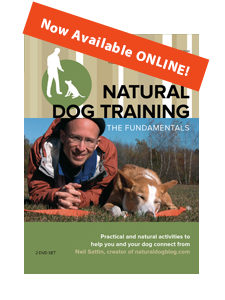

Great post! Lots of people will be getting puppies over the holidays, and they will have no idea what to do with all that puppy energy! Helping the pup relax is a big piece many people are missing. And of course, finding structured ways for mental and physical exercise.
Makes me want a puppy, just for the challenge of working with a brand new dog 🙂 I definitely don't have the energy for it right now, though!